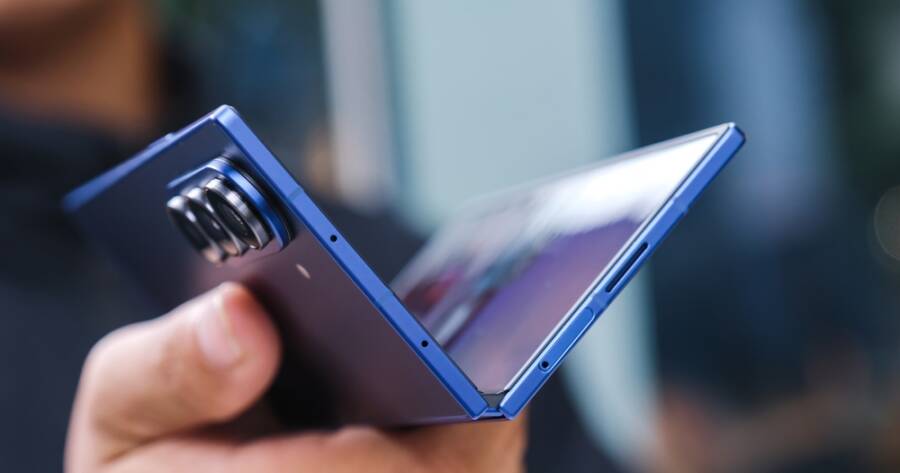When foldable smartphones first arrived, they seemed more like futuristic experiments than practical tools. Early designs were fragile, expensive, and unfamiliar. Many people admired the innovation but weren’t ready to trade the reliability of a solid glass screen for something that bent in half. Fast-forward a few years, and the story has changed. Foldable phones have evolved, finally finding their place among consumers who value flexibility, productivity, and style in equal measure.
Early Hurdles and the Long Road to Maturity
The first generation of foldable phones captured imagination but also skepticism. Screens were prone to creasing, hinges collected dust, and durability was questionable. Tech reviewers often treated them as niche gadgets rather than everyday devices. Manufacturers learned quickly that novelty wasn’t enough; people wanted practicality.
It took several design cycles for brands to address these concerns. Reinforced hinges, tougher glass composites, and better waterproofing transformed foldables from fragile showpieces into dependable tools. Software also improved dramatically. Early models often struggled with apps that didn’t adapt well to changing screen sizes. Now, most major operating systems handle transitions between folded and unfolded modes seamlessly. The user experience finally feels natural, not experimental.
As these issues were solved, public perception began to shift. Foldable phones no longer seemed like a risk — they started to look like the next logical step in smartphone design.
Why Foldables Make Sense Now
Foldable phones found their audience when they began solving real problems. Many users, especially professionals and creators, wanted a device that could multitask without needing a tablet or laptop. The ability to unfold into a larger display for editing documents, watching videos, or managing multiple apps became a genuine advantage.
Compactness also played a role. Flip-style foldables, which close into smaller, pocket-friendly shapes, appeal to users who miss the portability of older flip phones but still want modern performance. They combine nostalgia with convenience — a blend that resonates with both younger buyers and those who remember pre-smartphone days.
Battery life and processing power have also caught up. Modern foldables share the same high-end chipsets and camera systems as flagship phones, meaning users no longer sacrifice performance for design. Add faster charging and improved screens, and the trade-offs that once made foldables seem impractical are fading away.
In short, foldables make sense now because they fit seamlessly into how people already use their devices — for work, play, and everything in between.
The Appeal of a Multi-Form Device
One of the biggest draws of foldable phones is their ability to transform. A closed foldable works like a standard smartphone — compact, responsive, and one-handed. Open it, and it becomes something entirely different: a mini tablet for streaming, sketching, or reading. This dual identity gives users freedom to adapt to any situation without carrying multiple devices.
For mobile gamers, the larger unfolded display provides immersion and better control layouts. For business users, it’s ideal for reading emails alongside documents or joining video calls while referencing notes. Even casual users benefit from watching movies or browsing the web on a screen that feels expansive but folds neatly into a pocket.
Manufacturers have refined the balance between portability and usability, with hinges that stay firm at multiple angles and outer displays that handle quick tasks without unfolding. This attention to convenience has helped foldables move from conversation pieces to daily essentials.
The Role of Design and Lifestyle
Foldable phones have also become style statements. Early adopters helped establish them as symbols of innovation and sophistication. As more color options, thinner designs, and refined finishes emerged, foldables became less about technology and more about personal expression.
In a market where many smartphones look alike, the foldable stands out. It offers something tactile — the act of flipping or unfolding feels deliberate and satisfying. Some users appreciate that it draws curiosity; others simply like owning a device that feels different.
Marketing has shifted too. Instead of focusing solely on futuristic appeal, companies now highlight practical lifestyle benefits: space-saving portability, hands-free viewing, and creative multitasking. The message resonates because it connects innovation to everyday use, not just spectacle.
Foldable Phones That Have Proven Themselves
After years of refinement, a few foldable phones have emerged as reliable benchmarks for the category. Samsung’s Galaxy Z Fold 7 leads the pack among book-style designs, combining a strong hinge, bright inner display, and tight integration with Android’s multitasking tools. For those who prefer a smaller, nostalgic flip form, the Galaxy Z Flip 6 delivers a premium experience in a compact shape — its outer screen is now large enough for messages, navigation, and quick photos without unfolding.
Meanwhile, the Google Pixel Fold stands out for its sturdy build and exceptional camera system, proving that foldables can match — and sometimes exceed — the performance of standard flagships. Together, these models show that foldable phones are no longer experiments; they’re polished, dependable devices ready for everyday life.
Innovation That Finally Fits
Foldable phones have succeeded because they’ve matured. They’re no longer chasing headlines — they’re meeting needs. The technology has caught up with the vision, blending power, design, and adaptability in ways that traditional smartphones can’t match.
What once seemed like a futuristic experiment is now a sign of progress that feels natural. Foldables have finally found their audience: people who want technology that bends to fit their lives, not the other way around. In the ever-evolving world of mobile devices, that flexibility might be their greatest strength of all.

